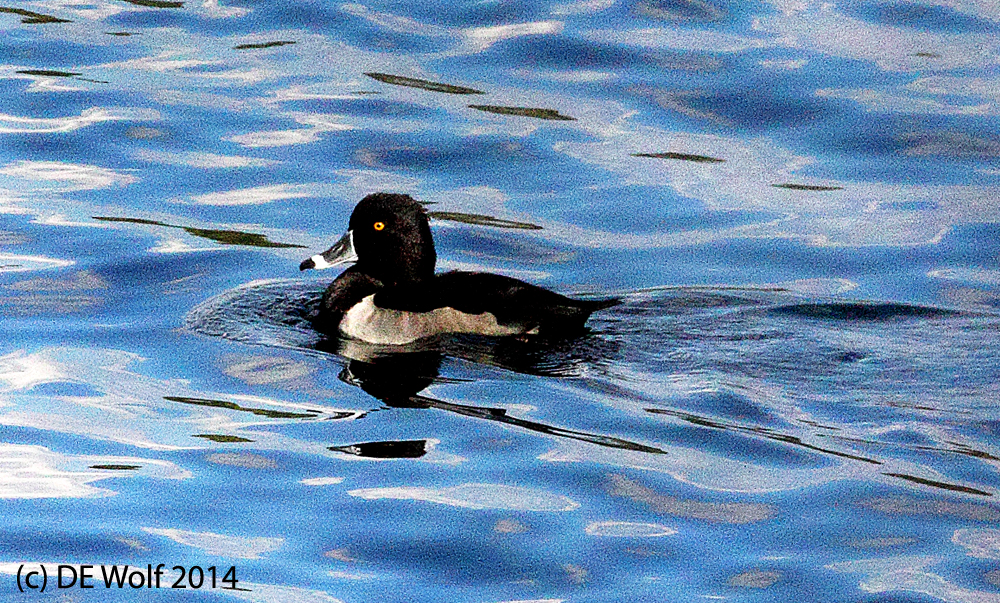The rangers at Cambridge’s Fresh Pond Reservoir don’t make photographing the water fowl easy. Access to the pond is everywhere blocked by fences, and except in very limited places these fences are above my head. I am guessing that these fences were not around when Teddy Roosevelt skated on the pond!
As we’ve moved into fall the water birds, the ducks and geese, not to mention a few confused seagulls (You must take Madame Arkadina away from here; what I wanted to say was, that Constantine has shot himself. ), have started showing up in abundance; so the temptation to photograph them is pretty strong. It was strong enough that yesterday I not only tested the limits of my ability to hand-hold my 200 mm lens, but I also thought I would see if by putting the lens up to a hole in the fencing I could still get a decent picture. The answer to both questions turned out to be, yes, I can.
The quality of the light was amazing. A breeze was causing the water to ripple, which to my eye gave the image a sense at once of motion and stillness. The light was intensely specular, and the color of a powder blue sky was strongly reflected in the water.
My specific quarry was a ring necked duck (Aythya collaris). This bird was a bit farther off than really capturable at high resolution with the 200 mm lens. The eye is sharp as is the bill, but in general I only call it a complete success when I can see the details of the feathers. It was a situation that definitely calls for a longer lens. And the fact that I was hand-holding meant that I had to use a high (1600 IS) which added a lot of grain because I had to do some very serious cropping.
However, what I find appealing about the result is how much like a watercolor it looks. Hmm! I look at the picture and I cannot quite figure out if it was photographed or painted and it is that ambiguity that draws me to the image.
Canon T2i with EF70-200mm f/4L USM Lens at 200 mm, ISO 1600, Aperture-Priority AE Mode 1/1600th. sec at f/13.0 with no exposure compensation.


Pingback: The ring-necked duck revisited – Aythya collaris | Hati and Skoll Gallery